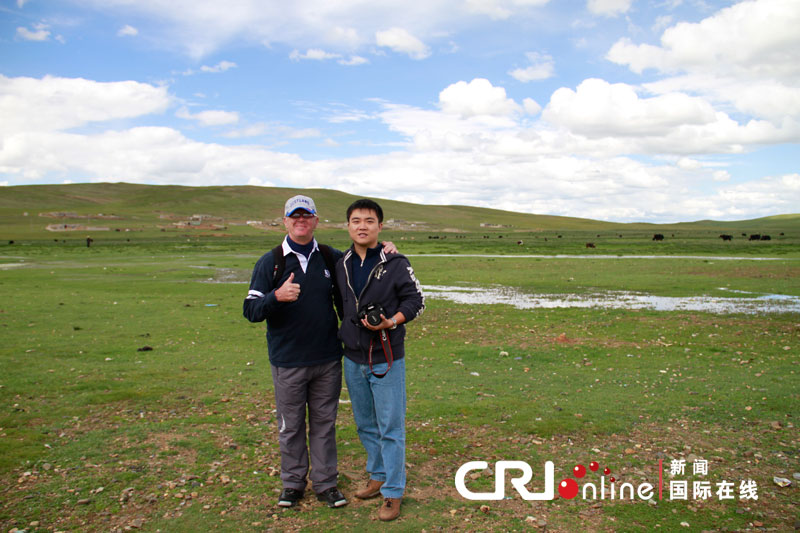
Duggy Day with his colleague in pastoral areas in Tibet
After a trip to China's northernmost tip of Mohe in Helongjiang Province in December, 2010, Duggy Day, host and producer of the popular 'Hot Pot Show' broadcast on China Radio International, went on his trip to another magnificent region in southwest China's Tibet, known as "roof of the world".
Duggy has kept his habit of writing travel logs from the last trip. The followings are digests of his diary(Diary I):
"Moving slowly" is the key to ease hypoxia
I had expected raining when we arrived at the Lhasa Gonggar Airport. However, the sunny and clear sky with boundless mountains surprised us all.
When our buses passed numerous mountain tunnels and newly built modern airport expressways leading to the city proper, all passengers were busy taking pictures of the stunning scenery.
However, as the elevation rose, some of my colleagues began to suffer from altitude sickness, feeling headaches, dizziness, chest distress, or shortness of breath. I was fine and I was told before to move slowly as one of the key tips for possible "hypoxia". We slept early to get ready for the following adventures.
"Namtso Lake reminds me of Scotland"
On August 3, we drove to see the "Namtso Lake" in the north of Tibet. It is definitely an exhilarating experience as we had a car-driving journey along the mountain road at an elevation of over 4,500 meters.
The Namtso Lake is 4,718 meters above the sea level. It is the highest saltwater lake in the world. Respected as one of the four holiest lakes by religious pilgrims, the lake is bestowed with breathtaking scenery, reminding me of the highland in my hometown - Scotland.
"There have been dramatic changes during the past few years for local herdsmen in the neighborhood. The government has helped us a lot," said a 71-year-old herdsman I met by the lake.
Asia's biggest logistics center in Nagqu
On August 4, we paid a visit to the logistics center being built in northern Tibet's Nagqu. It is said that this will be the biggest logistics center in Asia in the future.
Mr. Donghong Li, who is in charge of the Nagqu Railway Station, told me the reason why to build a logistics center in Nagqu.
"Firstly, infrastructure in Nagqu has been well developed, and an efficient expressway and railway network will better connect Tibet and other inland cities across the coutnry. Secondly, the logistics center in Nagqu will attract more investment," said by Mr. Donghong Li.
For example, the incompletely operated logistics center at the present transports about 80,000 tons of "5100" Mineral Water annually to other places, Li added.
(To be continued)
